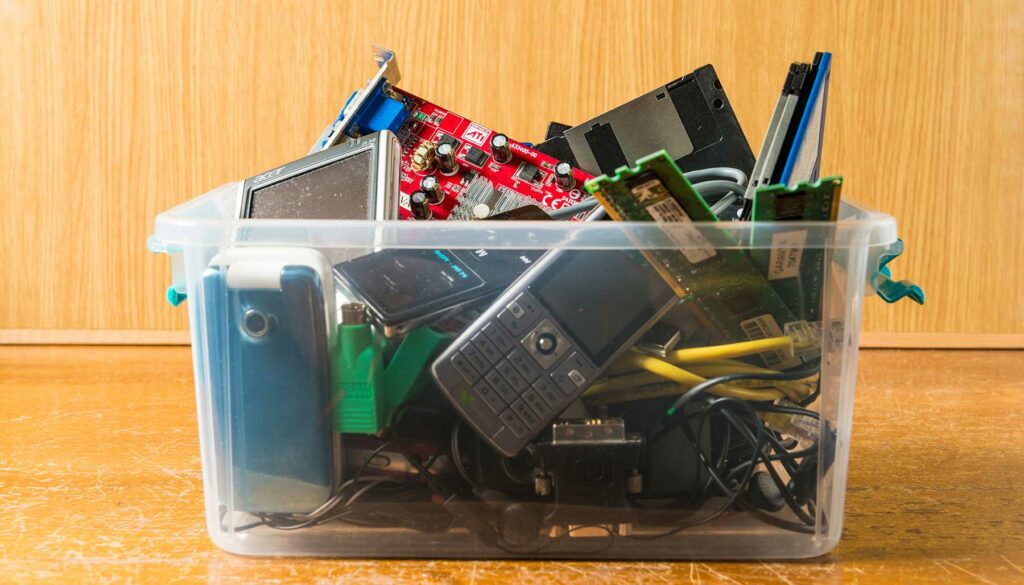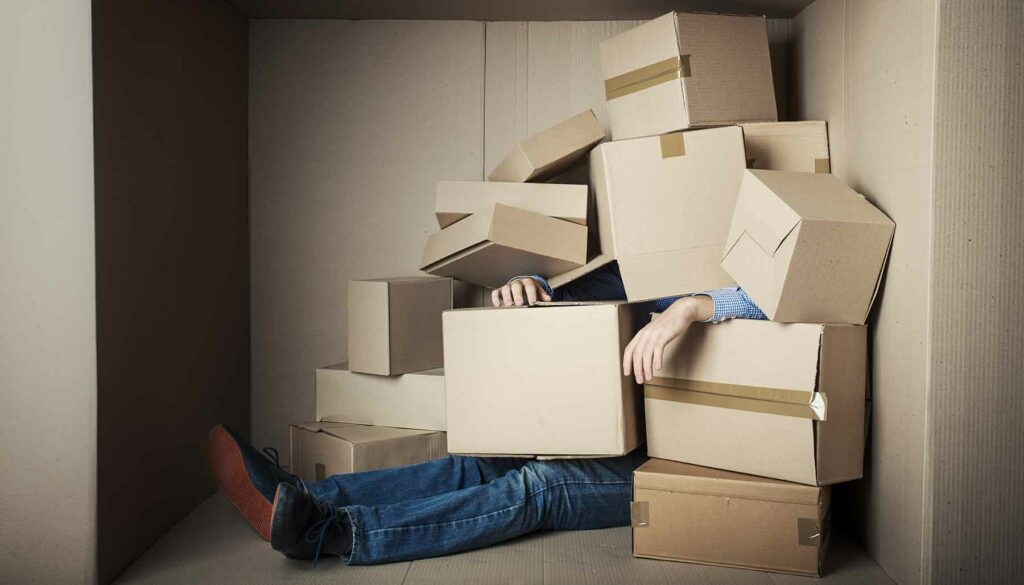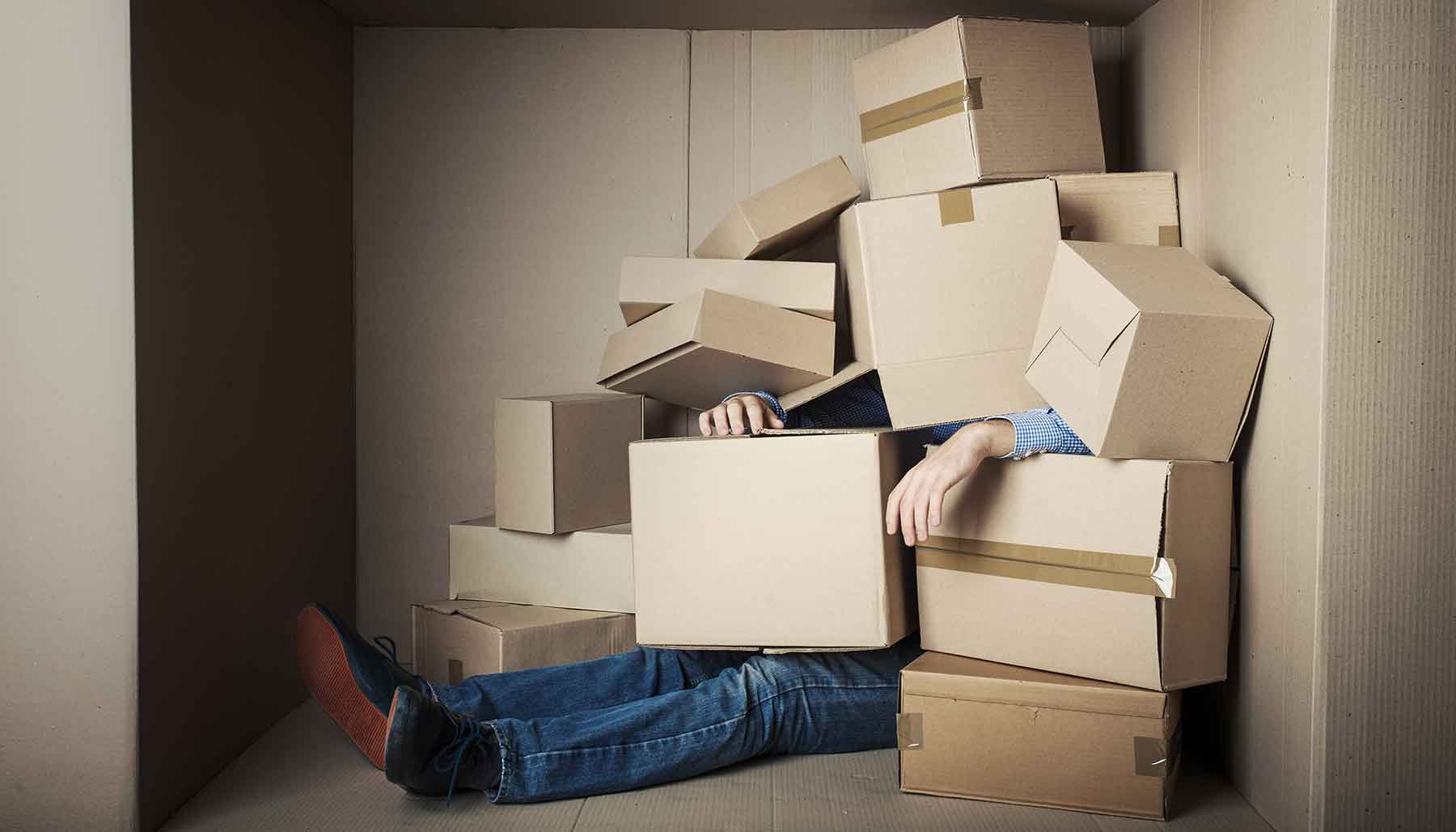I want to tell you about a box I have under my desk.
Inside of it, there is a binder full of seed packets, a bunch of “important” papers, pens and pencils, a couple of magazines I haven’t read yet, random cords, probably a few flash drives… I’m sure there are a lot more things in there that I’ve forgotten about.
No, it’s not stuff I’m getting rid of. This is my doom box. And I’d be lying if I said it was my only one. There may or may not be another one somewhere in my room and a similar situation in a kitchen drawer.
Related: Simple Ways to Organize Your Bedroom That’ll Change Your Life
If you are active on TikTok, you may have heard of a doom box already. The topic has been circulating on the social media app since at least last year but has really taken off in the last few months. People are not just talking about these boxes but also admitting they possess them–and sometimes even showing what’s inside of them.
What Exactly Is a Doom Box?

If you are unfamiliar with the term, it sounds kind of gloomy. It’s nothing scary… unless you’re organizing guru Marie Kondo. Doom boxes probably keep her up at night.
Doom boxes are basically just a collection of random things that have been put in (you guessed it) a box. Things accumulate in the box and never get put away. These can be things that don’t have their own place in your home yet, or they could be things that just never quite make it back to where they go. Doom boxes are often created accidentally, such as when you dump everything off your messy desk into a box with the intention to organize the stuff later… but the organizing part never happens.
Sometimes, a doom box isn’t even a box at all. You could have a closet, an old bag, or a whole corner of a room. Some people even have a collection of doom boxes, which is essentially a collection of collections! And if you have a junk drawer, then yes, you have a doom box, too.
As for the name? The word “doom” isn’t supposed to strike fear or suggest these boxes have anything to do with downfall or destruction. “Doom” is really an acronym, standing for “Didn’t Organize Only Moved.” The name makes more sense now, doesn’t it? After all, I speak from personal experience when I say that it’s literally an unorganized box of stuff I just moved out of the way.
So, What Happens With Doom Boxes?

If you’re wondering what anyone ever does with doom boxes, the answer is simple: mostly nothing. They can be created with the purpose of being temporary, but they usually end up becoming a go-to storage spot. Do I love it? No. Do I know how to function without a doom box? Also no.
A lot of times, these collections of random objects will start with really good, temporary intentions. You really need to organize your bedroom, or you are desperate to ditch the kitchen counter clutter. So, you’ll just swipe all that random junk into this empty box. Now you can clean and organize the previously jumbled area. The visual clutter is gone! You will come back to the box later.
Except, we don’t usually come back to the box later. Well, we come back to grab something, because we remember we put it in the box. The doom box becomes part of your house. It might become less or more full from time to time, but it probably never goes away. Sorry, KonMari enthusiasts.
If you need an example, let’s go back to the box I mentioned that sits under my desk. It has been there for about a year and a half. I started the box while I was cleaning up my desk and just haven’t gotten around to doing anything with the stuff in it.
Why Do People Make Doom Boxes?
As it turns out, doom boxes are particularly common for people with ADHD. Can confirm.
It comes down to executive function. This is the cognitive process that includes working memory, flexible thinking, and self-control. It’s what we use to attain chosen goals by planning, focusing attention, remembering, managing time, and juggling multiple tasks to get to the end goal. Clearly, this can have a drastic effect on a person’s organizational skills.
It’s easy to look at a cluttered space and just quickly toss it all in a box. It is much harder to move forward with actually organizing all of that stuff without becoming overwhelmed. As time goes on, you avoid the contents of the box to avoid becoming overwhelmed, and eventually, you end up with a permanent doom box. Hey, it’s part of the decor!
Of course, doom boxes and ADHD can exist separately. You can have a doom box and not have ADHD, and you can also have ADHD and not a single doom box. However, the two often go hand in hand. I didn’t understand the link between neurodivergence and doom boxes until just recently when people started talking about it. I’ve had the doom box tendency since I was a kid, but I had no idea that other people had them too.
Related: What It’s Like to Be Diagnosed with ADHD as an Adult Woman
Is It Possible to Get Rid of Doom Boxes?

If you currently have a doom box (or multiple boxes), you’ve probably wondered if you’ll ever get rid of it.
Before we move forward here, it’s important to note that it’s absolutely okay to have a doom box. It has nothing to do with being good or bad, and you’re not failing at anything by having a doom box. I don’t care about what organizational experts say!
But if you really don’t like having one (or three), you can get rid of it. But to do so, you have to hold yourself accountable, and you might have to let someone help you.
You don’t necessarily have to have your friend come over and go through the doom box piece by piece with you – although that is certainly a helpful option if you can swing it. You can also ask someone to check in on your progress and give you a timeline to work within. This is particularly helpful for those of us who put off doing it because the only consequence is just the continued existence of the doom box. Someone holding you accountable is a little more pressing than that, at least.
From here, you really just need to take it bit by bit. Don’t underestimate how much time it will take; this may take much more than just a couple of hours. While everyone’s doom box is different, I am willing to bet that it’s quite a hurdle to jump for just about anyone.
Don’t be afraid to break it up, either. You absolutely do not have to tackle the entirety of the box in one sitting. Pick one afternoon each week, or devote a certain amount of time each day. There is no right or wrong way to do it, and you just have to figure out what time frame works best for you.
Personally, I like to start with a singular task. Identify things that need to go into the trash or recycling. Only focus on those things. Only after that is completely taken care of do I move on to separating the other items into two piles: donate and keep. Bonus points if I set a date for when those donations will get dropped off, and I even put it in my calendar!

The keep pile is the most daunting because it opens up an entirely different can of worms: finding homes for all those previously homeless items. This is when having an accountability buddy is key.
There Are Positives to a Doom Box if Done Right
Most people will tell you that you have to find permanent homes for all of your possessions or else they don’t belong in your space. That’s okay if that works for them. However, doom boxes might be a necessary evil for some of us.
They can provide a simple solution to make your space more calming and less cluttered. Other people might not throw those random, non-related items into the same bin; it wouldn’t make sense to them. But if you know where those items are and can find them when you need them, then I would say it works for you. A doom box can give a permanent home to items that otherwise don’t have one. It can keep items from building up on shelves, mantels, table tops, and more, cutting down on visual clutter.
As long as you can keep it in check, go for it. Doom boxes only venture into the negative if they are causing you problems. This would include making you feel overwhelmed or causing you to overspend – as in, you forget what is in the box and you re-buy the items again and again.













